How To Remove Paint From Just About Anything

You were careful, but it happens to the best of us -- paint on your..... fill in the blank!
Don't worry, we have tried and true answers here for how to remove paint from just about anything!
How To Remove Paint From Clothes Or Fabric
At one point or another we’ve all made that mistake: paint on our clothes... now what? The first step to removing paint from clothing is first identifying the type of paint that has stained the clothing; proper stain removal will depend on what type of paint you’re dealing with.
For acrylic craft paints or water based paints, you’re in luck-- these paints are made to dissolve in water, and are relatively easy to treat once they’ve come in contact with cloth. For best results, try and treat the stain before it dries out.
1. Use a utensil like a spoon or fork to scrape away any extra paint.
2. Then use a wet cloth to wet the stain, and rub some detergent into the stain with the cloth or your fingers.
3. Rinse thoroughly.
Repeat these steps until the stain is completely removed. If paint residue still remains, some people recommend using a bit of nail polish remover on a cloth to further blot at the stain until it’s gone. Others recommend using 91% rubbing alcohol on the stain, and scrubbing with a toothbrush. Take care not to scrub too hard so as not to ruin the fabric.
For acrylic or water based paint that has already dried, it’s recommended to use a hard bristle brush to remove as much of the dried paint as possible, then follow the steps above.
Oil based paint -- For a fresh oil based paint stain, (where the paint is still wet), here’s what other users have recommended:
1. Remove any extra paint with a utensil such as a knife or fork.
2. Place the fabric on top of another absorbent fabric and sponge the fabric with a small bit of turpentine. Keep sponging the stain until the stain begins to disappear. Keep an eye on the fabric to make sure the color isn’t running.
3. When the stain is gone, do not rinse your garment, rather soak the garment overnight in warm water with a bit of laundry detergent.
4. Wash and dry fabric according the instructions on the label.
If you’re dealing with an oil based stain that has dried and set in the fabric, use a hard bristle brush to scrape away as much of the paint as possible. When possible, check the paint can and see which paint removal is recommended and apply. Once the paint is wet and loosened, use the removal technique above.
How To Remove Paint From Carpet
As with any paint stain it’s important first to identify which type of paint has stained the carpet.
Acrylic paints
1. Blot the stain with a wet rag. This will begin to loosen the paint.
2. Once the paint is wet, use a small amount of acetone on the rag (always do a small test area first to make sure the acetone doesn’t ruin the fibers of the carpet in any way). Blot the stain with the acetone as well, and this will further break up the paint.
3. Use a commercial carpet cleaning solution. Pour a small amount of the solution on the rug and work in well with a clean rag or toothbrush. Let the solution sit for a few minutes, then vacuum.
For trickier stains, you may need to repeat the process several times until the stain is gone.
Water or oil based paint
1. Blot the stain with a rag to remove as much of the paint as you can.
2. Use dish washing detergent or Woolite mixed with water to continue to rub the stain out. Start at the edge of the stain and work your way towards the middle. Use a white rag so as not to cause discoloration of the carpet.
3. To finish, use a wet vac to vacuum up the cleaning solution.
If the stain still remains, you may have to repeat these steps until the stain is gone.
Oil based paint
1. Use a putty knife to remove as much of the paint as possible from the carpet.
2. Using a wet rag, blot the stain as much as possible to remove as much paint as you can. Do not rub the stain, as it may drive the paint deeper into the carpet.
3. Once you’ve blotted up as much paint as you can, add some turpentine to the rag and continue blotting the stain. The turpentine will further break up the paint to allow the stain to be removed completely.
4. Use a clean white cloth with a mixture of warm water and dish washing soap to clean the remainder of the area, and to get rid of any remaining discoloration.
5. To finish, blot up any remaining moisture in the carpet with paper towels.
How To Remove Paint From Concrete
1. Remove as much paint as you can from the concrete with a heavy duty brush or scraper.
2. Clean the area well and apply a chemical paint stripper. Be sure to follow the manufacturer’s directions as each chemical’s use can vary. 3. Leave the paint stripper on the stain for the recommended amount of time.
3. Scrub off the the remainder of the paint with the brush or scraper.
4. To finish, use a hose or power washer to get rid of any remaining debris.
How To Remove Paint From Brick
The most common way that people recommend removing paint from brick is by using a power washer. However, take care if there is loose or crumbling brick or mortar, because the power washer may further loosen the mortar, and the water may get into the crevices.
An alternative is to use a paint stripper specifically for brick.
1. Before using the paint stripper, use a paint scraper to scrape off any excess flaking paint on the brick.
2. Once your brick has been prepped, test a small amount of paint stripper on an inconspicuous area of the brick and make sure it does not ruin the brick or mortar.
3. Apply the paint stripper as per the manufacturer’s instructions (all chemicals are different, so make sure to read labels carefully), then apply peeling strips.
4. Allow to sit for the designated amount of time, then remove the strips. Most of the paint will come off with the strips, but you may need to use a scraper to remove any residue.
5. To finish, use a wire brush and warm water to scrub off any remaining paint.
How To Remove Paint From Plastic
Removing paint from plastic can be trickier than removing paint from harder surfaces like metal or concrete, because many of the chemical strippers may break down the plastic as well as the paint. Take care to use plastic-safe alternatives.
Users recommend the following:
1. Remove all excess paint with a putty knife
2. Apply nail polish and allow to sit for a few minutes before rubbing off.
Others recommend using denatured alcohol--also allow to sit then rub off. As always, first test the nail polish or alcohol on a small part of the plastic to make sure it does not ruin the plastic. Once most of the paint has been removed, you can use a sponge or cloth in warm water and rub away the rest of the paint.
How To Remove Paint From Your Car
It’s not fun, but it’s happened to the best of us: your car was parked (or not!) and someone side-swiped you and now you have someone else’s paint on your car! What’s the best way to remove it without damaging the paint or finish on your car?
Users have recommended the following to remove paint on your vehicle:
1. Use a soft rag and some denatured alcohol. Rub softly and that should get rid of the paint.
2. After the paint is gone, wash it with a wet cloth and apply some wax if needed.
Others recommend using diluted paint thinner to rub the paint off. As always with paint thinner, make sure to test a small hidden area to be sure that you don’t ruin the finish on your car.
How To Remove Paint From Leather
Removing paint from any kind of leather needs to be done with care, and you’ll get the best results if you know exactly what kind of leather and what kind of paint you’re dealing with.
For water based paint stains on leather
1. Remove all paint first by scraping it off with a dull knife or credit card, taking care not to scrape the leather.
2. Use a wet cloth and gently rub down the stain. The less water you use, the better as leather does not respond well to water.
To remove an oil based stain
1. Apply olive oil or baby oil to a rag and wipe the oil into the stain. This will break up the paint.
2. You can then use a dry cloth to blot up as much of the stain as you can. As you get paint on the cloth, be sure to wipe it off on another cloth in-between blots.
3. Once the paint is gone, you’ll need to remove any excess oil left on the leather. You can do this with dish soap on a damp cloth. The less wet the cloth is, the better, as leather does not respond well to water.
To remove heavier stains on leather, you may need to use chemicals that may be damaging to leather. Be sure to test any chemical you use on a small hidden part of the leather to see if it causes damage to the leather.
Two chemicals that are recommended to remove more serious stains on leather are nail polish remover and rubbing alcohol. Before you use either of these, again, be sure to test the chemical first.
1. Apply the chemical to a cotton ball or swab, and be sure to remove any excess liquid (nail polish remover or rubbing alcohol) before you use on the stain.
2. Rub the stain gently until all paint is removed.
3. After any chemicals are used to remove paint stains, you’ll want to be sure that all traces of the chemical are removed from the leather as well. Use a mild soap (like dish soap) on a damp cloth and rub all chemical residue away.
4. Most professionals recommend using a leather conditioner on your leather seats or furniture after applying any type of chemical for cleaning purposes. This will further condition and restore the leather after any vigorous cleaning.
How To Remove Paint From Skin
You’ve been busy DIYing it; crafting or painting your walls, and you’re covered in paint. Now what?
Most people recommend using an oil--either baby oil or olive oil--and rubbing the oil vigorously into your skin until the paint starts to break up and wash away. After removing as much paint from your skin as possible with the oil, use a gentle soap and water to wash away any remaining oil and/or paint from your skin.
How To Remove Paint From Walls
Most people will just paint a new layer of paint over the current one, but often there are times when you might want to first remove excess layers of paint from a wall.
There are two recommended methods to do this. First, make sure to lay a drop cloth under the area of wall you’re working on, as this will allow for an easy clean up. You’ll want to use a mask and goggles as well to protect yourself against flying paint chips and dust!
Method 1:
1. Use a wire brush to take off as much of the peeling or cracked paint as possible.
2. Next, use a paint scraper to remove as much loose paint as possible. 3. Finally, use a heavy duty sander to finish removing any extra paint.
If you prefer to use a chemical stripper, there are many to choose from. Most people recommend using a gel stripper as it won’t run down the walls like a liquid stripper may. Again, be sure to protect the floor and any other areas around your work space.
Method 2:
1. Choose the right paint stripper for the kind of paint you’re removing (usually either latex or acrylic paint).
2. Apply the chemical gel stripper to the wall and let sit according to manufacturer’s instructions.
3. Scrape off the paint with a paint scraper.
**As always when removing paint from walls, take the following precautions: Work in a well ventilated area. If you suspect that the paint may have been applied before 1978, the paint may be lead-based paint and can be toxic. Call a professional.
How To Get Paint Off Hardwood Floors
If you have wood floors, chances are you will get some sort of paint on them over the years. Luckily, there are a few tried and tested methods that will easily remove paint from your wood floors without destroying the finish.
Here's what other Hometalkers recommend:
1. If you have a heat gun, aim the gun at the stain, and the heat will soften the paint.
2. Use a putty knife or other non sharp utensil to scrape away the paint.
3. Once the paint is gone, use a damp cloth to remove any residue.
If you don’t have a heat gun, you can dip a rag into rubbing alcohol and rub the stain directly until the paint is removed. Use a damp cloth to remove any residue of paint or alcohol.
How To Remove Paint From Tile
With some patience and the right tools, you can learn how to remove paint from tile. If you’re looking to remove a few dried on paint drops, you’ll want to get a razor blade and work at gently scraping the paint off, taking care not to scrape at the tile’s finish or glaze.
If this method doesn’t work, or you have more than a few drops of paint on your tiles, a heat gun is your best bet. Move the heat gun over the spots, being careful not to scorch the tile in any one place. The heat will soften the paint enough to scrape it off. Use a wet cloth to wipe away any residue.
For more stubborn paint stains, you may choose to use a chemical paint remover. The type of remover you use will depend on your type of tiles and their finish. Be sure to have this information before you choose a chemical paint remover. Use the remover according to manufacturer's instructions, then scrape off the paint. If the finish on the tiles has been damaged in any way, you may need to refinish the tiles.
How To Get Rid Of Paint Fumes
You’ve just painted your room and you love it, but the lingering small? Not so much. Here are a few ways to get rid of the fresh paint smell.
1. Ventilate the area well. Open windows and door where possible. Use fans to circulate the air in the room.
2. Use charcoal. Charcoal is an odor absorber. You can put bowls of charcoal throughout the room and the charcoal will begin to absorb the smell.
3. A bucket of water and cut lemons has also been recommended to remove paint odors. The water will work to absorb some of the smell and the lemons will add a fresh citrus-y smell to the room.
4. Baking soda is also known for absorbing odors. Place several bowls of baking soda throughout the room and the baking soda will absorb the paint smell.
5. Vinegar is a well known odor neutralizer. Place bowls of vinegar around the room to neutralize the paint smell.
6. Coffee grinds will absorb minor paint odors as well. Just make sure you like the smell of coffee, because they give off a strong smell of their own!
How To Remove Paint From Windows
Removing paint from windows may be time consuming, but the general method is simple:
1. Be sure to clean the windows well first to remove any extra dirt and grime.
2. Wet the glass. You can use water or window cleaner.
3. Use a razor blade at a 45 degree angle and gently scrape away the paint. Keeping the window wet with water or window cleaner will prevent the window from getting scratched or scraped.
4. Repeat these steps until the paint is completely gone, then clean once more with window cleaner.
How to remove paint from furniture
If you’re looking at next DIY painted furniture project, the first place you’ll want to start is by stripping your furniture. This is a popular DIY, and lots of users have weighed in to give us the best solutions.
Sanding: To remove paint from wooden furniture, the safest method is to use sandpaper and sand the piece by hand, or use an electric sander. Once the paint has been removed, wipe down the furniture to remove any dust or paint residue.
Scraping: If the paint on your furniture is cracked or peeling, you’ll want to use a paint scraper to scrape off any excess paint.
Heat Gun: When stubborn paint remains and cannot be removed with just a scraper, you’ll want to try a heat gun. Use the gun to heat the paint until it buckles and it able to be removed with a scraper. Take care not to leave the flame on any part of the wood too long so as not to char or burn the wood.
Chemical remover: If you prefer a chemical stripper, apply and let the stripper sit according to manufacturer’s instructions. Once the stripper sits for the set amount of time, use a paint scraper to remove the softened paint. Sand to remove any paint residue.
How To Remove Paint From Brass:
When painting your furniture, you’ll find that if you don’t remove all hardware first, you might be looking for solutions to remove paint from your metal hardware.
To remove paint from metal or brass hardware:
1. Remove the hardware completely from the furniture.
2. Soak in a slow cooker on low overnight. (If you’re worried about the paint staining your crock pot, or unhealthy toxins, you can use a crock pot liner, or use a pot that you don’t use for cooking.)
For most paints, the paint will come off while “cooking” and you won’t even need a scraper. If paint remains, as soon as you remove the hardware from the water, scrub it immediately with a stiff brush. Be sure to safely dispose of any paint residue.
How To Remove Paint From Aluminum
Removing paint from aluminum can be done by applying a chemical stripper. Be sure to follow the manufacturer’s instructions for application and waiting time. Don’t allow the stripper to sit longer than recommended, as aluminum can be easily damaged.
Alternately, many users have recommended using acetone to remove paint from aluminum.
1. Pour a small amount of acetone on a rag.
2. Test the acetone on a small area of your aluminum to make sure it does not cause damage.
3. Rub the aluminum with acetone until the paint is gone.
Enjoyed the project?

Comments
Join the conversation
-
 Leah Deverett
on Dec 05, 2017
Leah Deverett
on Dec 05, 2017
I'm going to remember this next time I get paint on my shirt... (which happens all the time!) Thanks for sharing these tips!
-
-



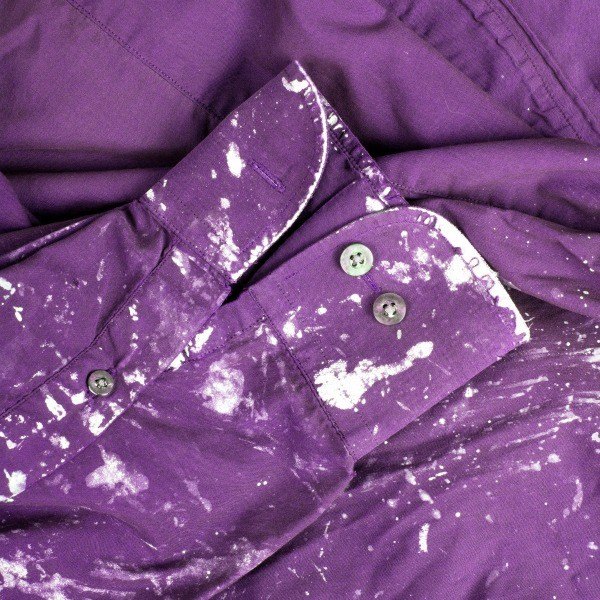

















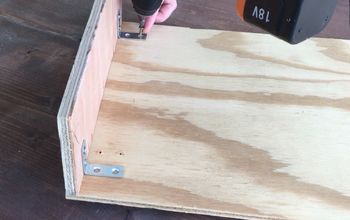
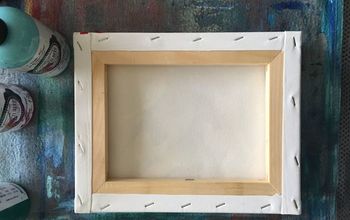




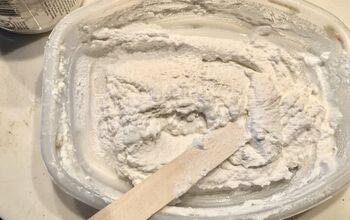



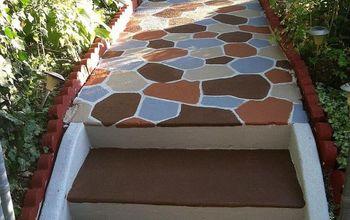




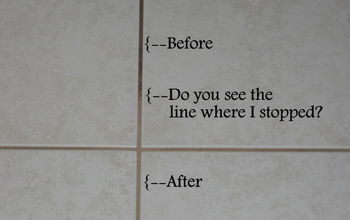




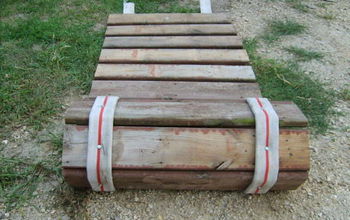


Frequently asked questions
Have a question about this project?